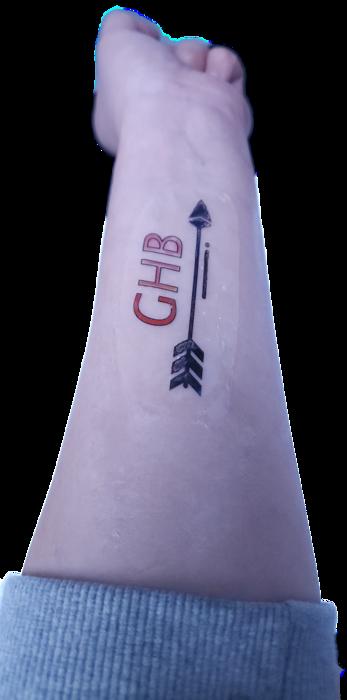Scientists develop a temporary tattoo that can detect if an unwanted drug is added to your drink.

Temporary tattoos are no longer just for kids and are increasingly popular among adults for a variety of occasions, from music festivals to parties. Researchers found inspiration in these tattoos to develop a version capable of detecting the presence of a drug often used to spike alcoholic beverages and facilitate sexual assaults .
It is an adhesive that responds in less than a second even to low concentrations of gamma-hydroxybutyric acid, also known as liquid ecstasy or GHB.
Experts aim to offer an option to address the latent risk posed by the inadvertent consumption of drinks laced with drugs such as Rohypnol (commonly known as roofies) or GHB in a social setting .
These colorless and tasteless drugs induce a stupor in the victim similar to that of severe alcohol poisoning , which can make people vulnerable to non-consensual sexual contact or sexual assault.
Currently, people can protect themselves by testing their drinks with specialized strips or cards that change color when exposed to these drugs. But current tests are often conspicuous or take minutes to report a result, introducing an additional danger.

This sticker detects the presence of a drug commonly used to spike drinks. Photo: Adapted from ACS Sensors 2025
That's why Gyeong-Ji Kim, Jai Eun An, Kyong-Cheol Ko, Oh Seok Kwon, and their colleagues wanted to develop a rapid-action test for GHB that is applied to the skin using a tattoo-like sticker.
To create these temporary tattoos, the researchers placed a mold over a thin plastic film decorated with tattoo-like designs. Into the mold, they poured a gel mixture containing a chemical receptor that turns red when it detects GHB. They then coated the back of the sticker with a diluted glue solution so it could adhere to the skin.
Researchers tested the adhesive's ability to detect small amounts of GHB in various beverages: whiskey, vodka, beer, soju (a Korean alcoholic beverage), and coffee.
In just one second, it detected the drug across a range of concentrations and below a level that would induce severe physiological symptoms: 0.01 micrograms of GHB in 1 milliliter of drink.
In practice, the user could dip a finger in a drink, touch the drop to the tattoo, and see the result almost immediately. And the sticker displays the positive result up to 30 days after detection, which could be important if it were needed as tamper evidence, experts note.
The researchers say their sticker technology is cheap and easy to manufacture, and could soon be commercialized.
eltiempo





